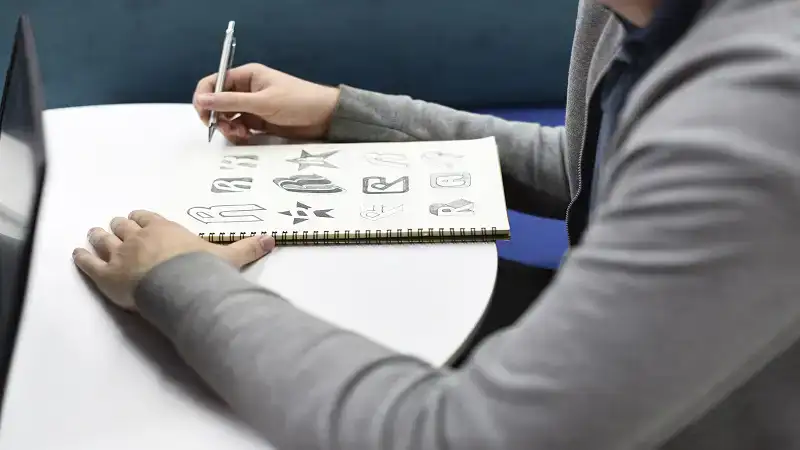Sketching is one of the most fundamental ways to express creativity. It provides an outlet for artists, whether they are beginners or professionals, to explore their imagination. When you sit down with a pencil and blank paper, the possibilities are endless. But sometimes, even the most creative individuals can face an artist’s block, unsure of what to sketch next. If you’ve been looking for fresh and inspiring drawing ideas, you’ve come to the right place.
In this article, we will explore a variety of sketch ideas, from simple”sketch:jgr9lxsmgmg= drawing ideas” concepts to more complex designs, that can ignite your creative spark. Whether you’re looking to practice basic techniques or dive into detailed art, these ideas will help guide you toward your next drawing. Let’s dive in and unlock the world of possibilities that await you in sketching.
Start With the Basics: Simple Drawing Ideas
Sometimes, the best way to overcome a creative block is to go back to the basics. Focusing on simple sketches can free your mind from the pressure of creating something elaborate and help you get back into the flow. To begin with, try drawing basic shapes like circles, squares, and triangles. These forms may seem straightforward, but they lay the foundation for more complex drawings.
Additionally, you can practice shading and light techniques on”sketch:jgr9lxsmgmg= drawing ideas” basic objects such as a cup, a ball, or a piece of fruit. Paying attention to how light interacts with these simple objects will improve your ability to add depth to your sketches. Transitioning from flat, two-dimensional images to something that looks more realistic can elevate even the simplest drawings.
Another idea is to sketch everyday items from your home or surroundings. Drawing a plant, a spoon, or your favorite book can help you observe the world around you more closely. By focusing on the details of common objects, you train your eye and hand to capture the subtle characteristics that make each item unique.
Nature as a Source of Inspiration
Nature provides endless inspiration for artists of all skill levels. From flowers and trees to animals and landscapes, there are countless subjects to explore. One of the best ways to start is by heading outdoors with a sketchbook. Even if you’re not able to venture out, looking out of a window or referencing photographs of nature can serve as excellent prompts.
Start by drawing something small, like a leaf or a butterfly. Pay attention to the shapes, lines, and”sketch:jgr9lxsmgmg= drawing ideas” textures that make up these natural elements. For instance, leaves are often simple to draw, but by examining their veins and edges, you can make your sketches more detailed and realistic.
Transitioning to larger subjects like trees or mountains can also challenge you in new ways. Drawing landscapes allows you to practice perspective, as objects in the distance will appear smaller and less detailed compared to those in the foreground. Meanwhile, sketching animals can help you improve your understanding of anatomy, movement, and texture. You could try drawing your pet or a bird sitting on a branch.
Experiment With Portraits and Figures
Another great sketch idea is to experiment with drawing human figures or portraits. While sketching faces or full-body figures may seem intimidating, it’s an excellent way to improve your ability to capture expressions, proportions, and anatomy.
To start with, you can draw a basic portrait. Focus on facial features such as the eyes, nose, and mouth, paying close attention to how these elements fit together. Faces can be complex, but once you practice sketching them regularly, you’ll develop a better understanding of proportions. Transitioning from basic facial shapes to more refined”sketch:jgr9lxsmgmg= drawing ideas” details will enhance your ability to capture a person’s likeness.
Moreover, you can practice sketching different expressions and emotions, such as happiness, surprise, or sadness. This not only helps with understanding the subtle changes in facial muscles but also adds life to your portraits.
Moving forward, try drawing full-body figures in various poses. Gesture drawing—quick, rough sketches of a figure in motion—can help you practice proportions and movement without focusing too much on the details. Sketching someone walking, sitting, or dancing allows you to understand how the body shifts and moves. Over time, your sketches will become more dynamic and expressive.
Dive Into Fantasy and Imagination
If you enjoy creating unique and imaginative art, fantasy”sketch:jgr9lxsmgmg= drawing ideas” sketches are a wonderful way to explore new ideas. When you free yourself from the boundaries of reality, you open up a world of possibilities. From mythical creatures to dreamlike landscapes, you can invent anything your mind can imagine.
One fun idea is to sketch mythical animals like dragons, unicorns, or griffins. Begin by combining elements from real animals, such as wings from a bird, the body of a lion, and the tail of a snake. Experiment with different combinations, and let your creativity run wild.
Similarly, designing imaginary worlds or cities is another great way to expand your sketching skills. Create futuristic cities with towering buildings or enchanted forests filled with magical creatures. By combining elements of nature, architecture, and fantasy, you can design entire worlds that feel both otherworldly and captivating.
Abstract and Pattern-Based Sketches
Sometimes, stepping away from realism and diving into abstract art can be refreshing. Abstract sketches allow you to focus on lines, shapes, and patterns without the need to represent anything in particular. This form of art can be freeing, as it removes the pressure of making your sketches look realistic.
Start by experimenting with geometric shapes, lines, and swirls. You can layer different patterns on top of one another to create a visually interesting composition. Additionally, playing with symmetry and asymmetry can give your abstract sketches a dynamic and engaging appearance.
Furthermore, creating mandalas or intricate doodles can be a meditative process. Begin by drawing a circle and dividing it into sections, then fill each section with repeating shapes or patterns. These designs can be as simple or as complex as you like, allowing you to explore the balance between structure and creativity.
Everyday Scenes and Storytelling
One of the most rewarding ways to find sketching ideas is by illustrating everyday scenes. From people walking in the park to a quiet café setting, these moments are filled with rich details waiting to be captured. This form of sketching, often called “urban sketching,” involves drawing what you see in real life, in real time.
Start by choosing a location—whether it’s your local coffee shop, a busy street, or your living room—and begin sketching what’s in front of you. Pay attention to the people, objects, and overall atmosphere. Sketching scenes from daily life helps you improve your ability to capture a moment in time, while also telling a story through your art.
Additionally, you can create a series of sketches that tell a narrative. For example, draw a sequence of events, such as a person waking up, getting ready, and leaving their house. By linking these sketches together, you can”sketch:jgr9lxsmgmg= drawing ideas”
convey a storyline, adding depth and meaning to your artwork.
Conclusion: Keep Experimenting and Exploring
In conclusion, drawing ideas are all”sketch:jgr9lxsmgmg= drawing ideas” around you, waiting to be discovered. Whether you’re sketching simple objects, nature scenes, portraits, or imaginative creations, the key is to keep experimenting and exploring new techniques. By continually practicing, you will develop your skills and uncover new ways to express your creativity. See More


